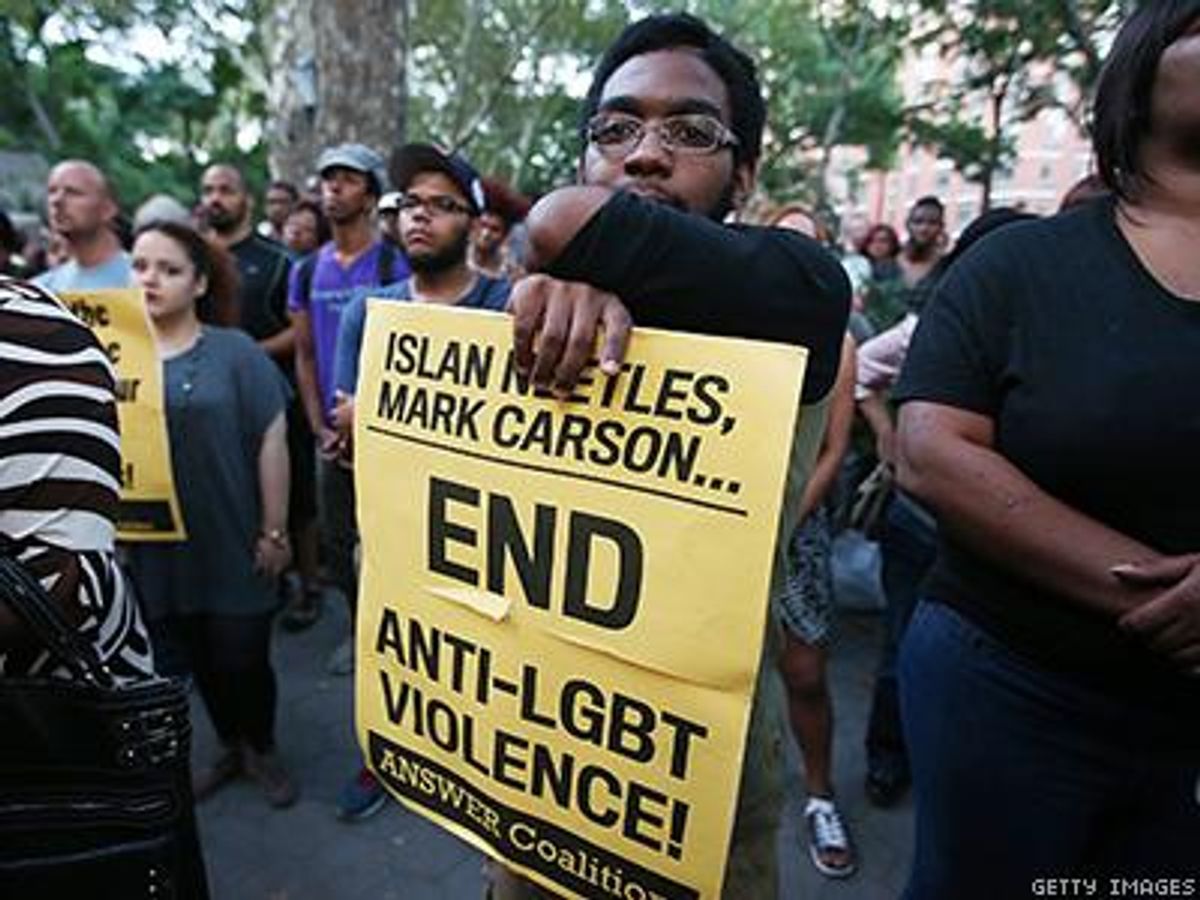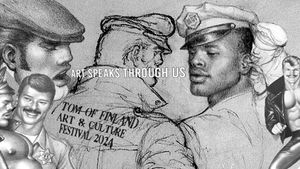Hate-motivated violence against transgender people rose 13 percent last year, while the number of overall incidents of hate-motivated violence against LGBTQ and the HIV-affected communities dropped 32 percent, compared with the previous year.
These new statistics, reported by BuzzFeed, come from a new report by the country's leading organization tracking violence against LGBTQ people and those living with HIV.
It's important to note that all the statistics in the report do not solely address LGBTQ-identified people, but also those who are HIV-affected, which are not necessarily a part of the lesbian, gay, bisexual and transgender community. Crimes committed against HIV-affected individuals are not broken out apart from LGBTQ people, nor vice versa.
Homicides of LGBTQ and HIV-impacted people increased 11 percent between 2013 and 2014, according to the figures released Tuesday by the National Coalition of Anti-Violence Programs.
"There is a public perception that there is a sea change for LGBTQ people, and that is true for public opinion of LGBTQ people," said Chai Jindasurat to BuzzFeed. Jindasurat coordinates programs with NCAVP. "But it is still dangerous to be LGBTQ in the United States." Homicides, he told The Guardian, "remain high with transgender people of color bearing the brunt of it."
Taken together, researchers identified a four-year trend in which trans women and LGBTQ people of color experienced a greater risk of homicide than LGBTQ people and HIV-affected communities as a whole, according to the report. There were 20 homicides last year, according to NCAVP's data, with 80 percent being people of color and 11 were transgender women of color.
The bright spot in the report is that the number of non-fatal cases of hate violence dropped almost a third to approximately 1,300 incidents nationwide.
But in the view of the NCAVP, that decrease should not be celebrated as a decline in attacks overall. Rather, the report said, fewer individuals may be reporting violence, and partner groups in Los Angeles and New York City had fewer resources to track the crimes. And the uptick in homicides shows violence against LGBTQ and HIV-affected people continues unabated.
BuzzFeed reported that the NCAVP's annual reports are widely considered to contain the most accurate stats on crimes against anti-LGBTQ and HIV-impacted communites in the country, with 16 member organizations in 14 states crunching numbers, but they do not attempt to capture every incident in the United States. Also, the data in the NCAVP's report includes incidents lacking in official government figures. For example, FBI statistics released in December were considered to have grossly underreported hate crimes against transgender people.
Many incidents are not reported. The report found just over half of victims -- 54 percent -- reported their crimes to police, which was up from 45 percent in 2013.
According to the report, when LGBTQ people and members of HIV-affected communities did report incidents to authorities, "27 percent of survivors reported experiencing hostile attitudes from the police."
Another problem is how police file their reports. In 2014, just 6 percent of the incidents that NCAVP classified as bias crimes were classified that way by police, the report found. The group classifies bias or hate crimes as those committed because the victims were targeted due to their identity.
"When law enforcement does not take the violence seriously, it sends a message to survivors that what happens to them is not a problem," said Jindasurat. "On a macro level, it continues to minimize the extent of the problem."
The figures show that violence disproportionately falls on transgender women, LGBTQ people of color, and LGBTQ youth, he added. "It's important for us to remember that marginalized LGBTQ people are facing some of the highest rates of violence."
The report found that "white gay cisgender men represented the largest group of hate violence survivors and victims in 2014." When they reported their crimes to police, the report said they were the most likely to have the attack classified as a hate crime.
Read the full report here.


















































































